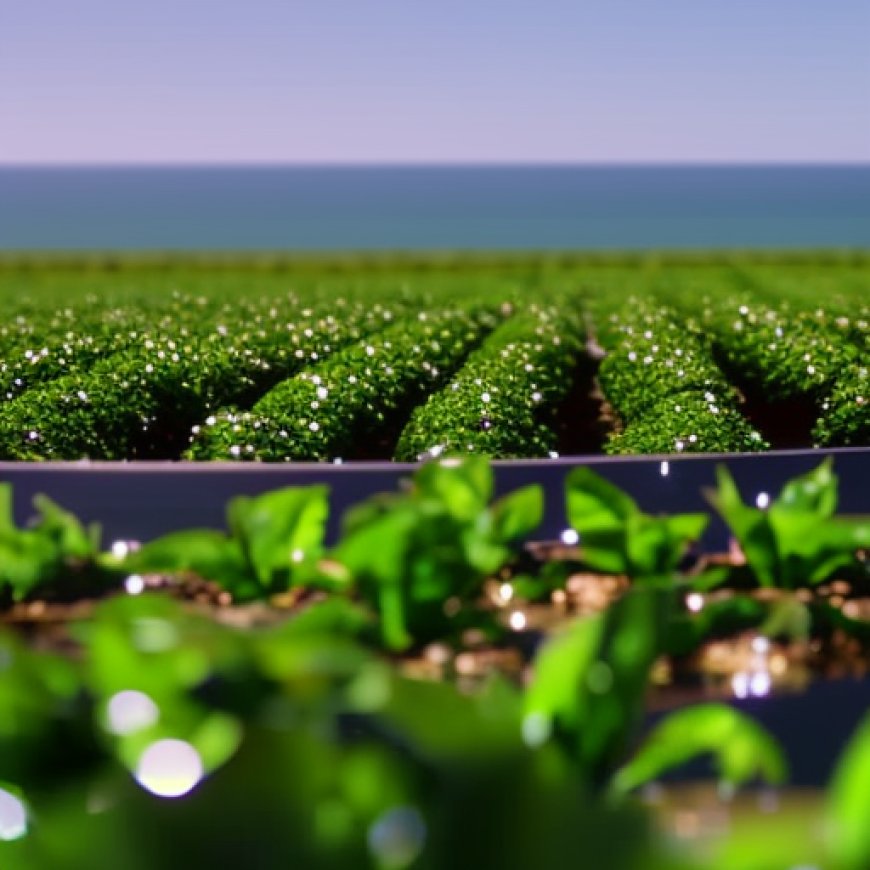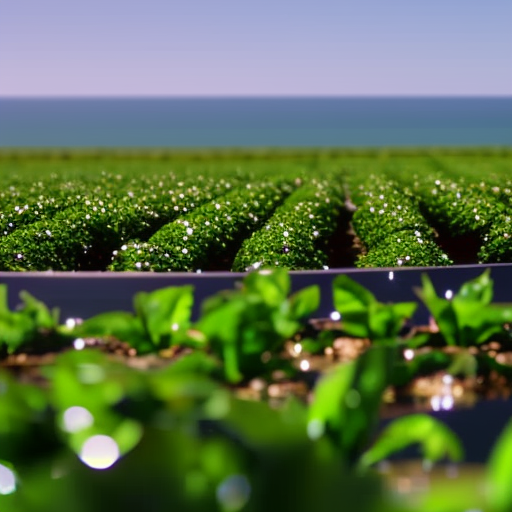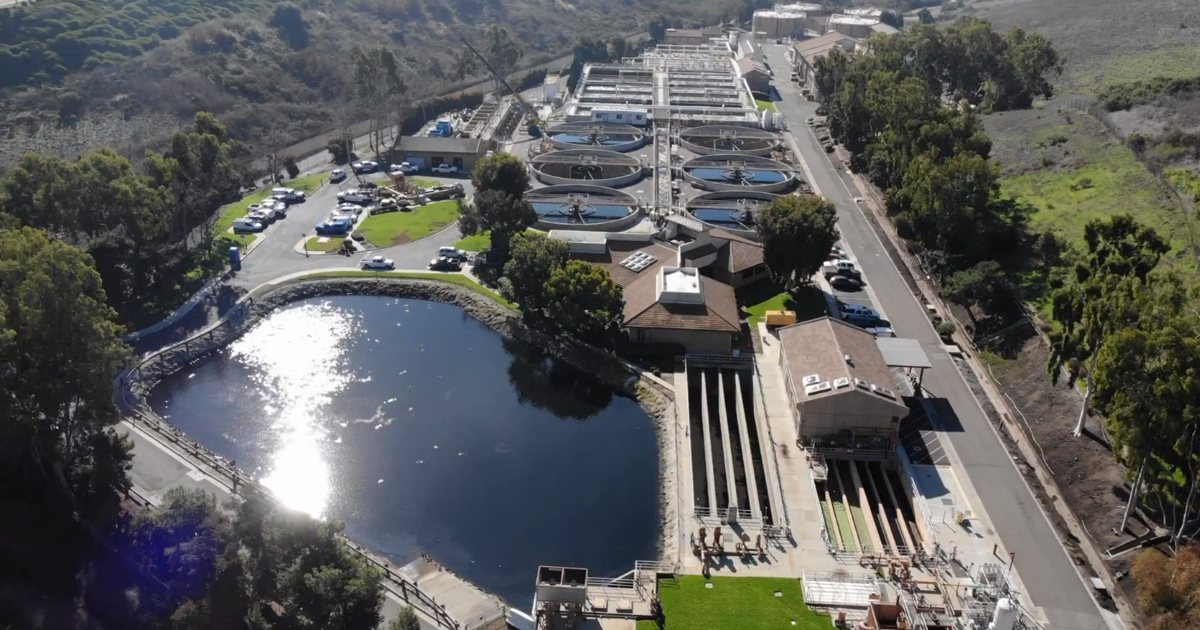South County Looks to Diversify Water Portfolio with Desalination, Direct Potable Reuse
South County Looks to Diversify Water Portfolio with Desalination, Direct Potable Reuse Picket Fence Media


Sustainable Water Solutions for South Orange County

South Orange County heavily relies on imported water, which is becoming increasingly expensive. To address this issue and ensure a more sustainable water supply, water districts in the area, such as South Coast Water District and Moulton Niguel Water District, are exploring options like ocean water desalination and direct potable reuse. These initiatives align with the Sustainable Development Goals (SDGs) by promoting clean water and sanitation (SDG 6) and climate action (SDG 13).
Ocean Desalination for Regional Reliability
According to South Coast Water District Assistant General Manager Marc Serna, ocean desalination plays a crucial role in enhancing regional water reliability. The limited groundwater basin in South Orange County makes it challenging to address emergency situations and long-term droughts. By implementing seawater desalination, the district not only meets its own water needs but also frees up water for other areas during difficult conditions.
Progress towards Seawater Desalination Plant
South Coast Water District is making progress in constructing a seawater desalination plant at Doheny State Beach. Geotechnical testing and monitoring have been completed, and the district has issued a request for proposals (RFP) for the design, build, and operation of the plant. The goal is to start producing water by 2028. This project contributes to SDG 6 by ensuring access to clean water and sanitation.
Water Exchange Agreements for Reliable Supply
Moulton Niguel Water District is exploring a water exchange agreement with the San Diego County Water Authority to enhance water supply reliability. This agreement would allow Moulton Niguel to access a portion of San Diego’s imported water supply during times of need, while San Diego would rely more on its own desalinated water. Similar agreements promote SDG 6 by ensuring access to clean water and sanitation.
Direct Potable Reuse for Local Supply
In addition to ocean desalination, Moulton Niguel Water District is developing a direct potable reuse project called OASIS (Optimized Adaptive Sustainable Integrated Supply). This project aims to convert wastewater into high-quality drinking water, following the regulations approved by the California Water Control Board in 2023. By demonstrating the safety and quality of the water, Moulton Niguel seeks to enhance local supply reliability and reduce ocean discharge, aligning with SDG 6.
Diversifying Water Portfolios for Resilience
Both South Coast Water District and Moulton Niguel Water District recognize the importance of diversifying their water portfolios to ensure resilience in uncertain times. By exploring various options and considering the needs and preferences of the communities they serve, these districts contribute to SDG 6 and SDG 13.
SDGs, Targets, and Indicators
-
SDG 6: Clean Water and Sanitation
- Target 6.4: By 2030, substantially increase water-use efficiency across all sectors and ensure sustainable withdrawals and supply of freshwater to address water scarcity.
- Indicator 6.4.1: Change in water-use efficiency over time.
-
SDG 9: Industry, Innovation, and Infrastructure
- Target 9.1: Develop quality, reliable, sustainable, and resilient infrastructure, including regional and transborder infrastructure, to support economic development and human well-being, with a focus on affordable and equitable access for all.
- Indicator 9.1.1: Proportion of the rural population who live within 2 km of an all-season road.
-
SDG 11: Sustainable Cities and Communities
- Target 11.5: By 2030, significantly reduce the number of deaths and the number of people affected and substantially decrease the direct economic losses relative to global gross domestic product caused by disasters, including water-related disasters, with a focus on protecting the poor and people in vulnerable situations.
- Indicator 11.5.1: Number of deaths, missing persons, and directly affected persons attributed to disasters per 100,000 population.
Table: SDGs, Targets, and Indicators
| SDGs | Targets | Indicators |
|---|---|---|
| SDG 6: Clean Water and Sanitation | Target 6.4: By 2030, substantially increase water-use efficiency across all sectors and ensure sustainable withdrawals and supply of freshwater to address water scarcity. | Indicator 6.4.1: Change in water-use efficiency over time. |
| SDG 9: Industry, Innovation, and Infrastructure | Target 9.1: Develop quality, reliable, sustainable, and resilient infrastructure, including regional and transborder infrastructure, to support economic development and human well-being, with a focus on affordable and equitable access for all. | Indicator 9.1.1: Proportion of the rural population who live within 2 km of an all-season road. |
| SDG 11: Sustainable Cities and Communities | Target 11.5: By 2030, significantly reduce the number of deaths and the number of people affected and substantially decrease the direct economic losses relative to global gross domestic product caused by disasters, including water-related disasters, with a focus on protecting the poor and people in vulnerable situations. | Indicator 11.5.1: Number of deaths, missing persons, and directly affected persons attributed to disasters per 100,000 population. |
Analysis
The issues highlighted in the article are connected to several Sustainable Development Goals (SDGs) and their targets. The relevant SDGs, targets, and indicators are as follows:
SDG 6: Clean Water and Sanitation
The article discusses the need for diversifying water supplies and addressing water scarcity. This aligns with SDG 6, which aims to ensure availability and sustainable management of water and sanitation for all.
Target 6.4: By 2030, substantially increase water-use efficiency across all sectors and ensure sustainable withdrawals and supply of freshwater to address water scarcity.
The article emphasizes the importance of increasing water-use efficiency and diversifying water supplies to address water scarcity. This target specifically addresses the need to improve water-use efficiency and ensure sustainable withdrawals and supply of freshwater.
Indicator 6.4.1: Change in water-use efficiency over time.
The article mentions the efforts of water districts to diversify their water supplies and improve water-use efficiency. This indicator can be used to measure progress towards the target of increasing water-use efficiency.
SDG 9: Industry, Innovation, and Infrastructure
The article discusses the construction of desalination plants and the development of infrastructure to support water supply. This aligns with SDG 9, which aims to build resilient infrastructure, promote inclusive and sustainable industrialization, and foster innovation.
Target 9.1: Develop quality, reliable, sustainable, and resilient infrastructure, including regional and transborder infrastructure, to support economic development and human well-being, with a focus on affordable and equitable access for all.
The article highlights the need for reliable and sustainable water infrastructure to support economic development and human well-being. This target specifically addresses the development of quality, reliable, sustainable, and resilient infrastructure.
Indicator 9.1.1: Proportion of the rural population who live within 2 km of an all-season road.
This specific indicator is not directly mentioned in the article, but it reflects the importance of infrastructure accessibility. In the context of water supply, it can be used to measure the accessibility of water infrastructure to the population.
SDG 11: Sustainable Cities and Communities
The article discusses the need for reliable water supply and infrastructure to support cities and communities. This aligns with SDG 11, which aims to make cities and human settlements inclusive, safe, resilient, and sustainable.
Target 11.5: By 2030, significantly reduce the number of deaths and the number of people affected and substantially decrease the direct economic losses relative to global gross domestic product caused by disasters, including water-related disasters, with a focus on protecting the poor and people in vulnerable situations.
The article mentions the importance of reliable water supply in emergency situations and the need to protect communities from water-related disasters. This target specifically addresses the reduction of deaths, affected people, and economic losses caused by water-related disasters.
Indicator 11.5.1: Number of deaths, missing persons, and directly affected persons attributed to disasters per 100,000 population.
This specific indicator is not directly mentioned in the article, but it reflects the need to measure the impact of water-related disasters on communities. It can be used to assess progress towards the target of reducing deaths, affected people, and economic losses caused by disasters.
Behold! This splendid article springs forth from the wellspring of knowledge, shaped by a wondrous proprietary AI technology that delved into a vast ocean of data, illuminating the path towards the Sustainable Development Goals. Remember that all rights are reserved by SDG Investors LLC, empowering us to champion progress together.
Source: picketfencemedia.com

Join us, as fellow seekers of change, on a transformative journey at https://sdgtalks.ai/welcome, where you can become a member and actively contribute to shaping a brighter future.







